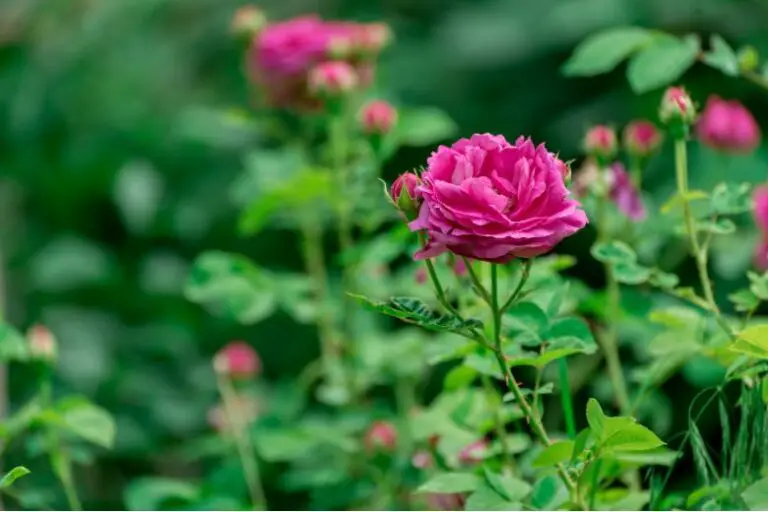Can I Propagate Mirabilis Jalapa from Cuttings
If you’re a gardening enthusiast and have fallen in love with the vibrant and charming Mirabilis Jalapa, commonly known as the Four O’Clock flower, you might be wondering if you can propagate it from cuttings. In this article, we’ll explore the process of propagating Mirabilis Jalapa from cuttings and provide you with a step-by-step guide to achieve successful results.
Understanding Mirabilis Jalapa
Before we delve into the propagation methods, let’s familiarize ourselves with Mirabilis Jalapa. This popular flowering plant is native to the Americas and is known for its attractive trumpet-shaped flowers that come in a variety of colors, including red, pink, yellow, and white. It derives its name from the fascinating characteristic of its flowers opening in the late afternoon, usually around four o’clock.
Propagation Methods for Mirabilis Jalapa
When it comes to propagating Mirabilis Jalapa, there are primarily two methods: seed propagation and cutting propagation. While both methods have their merits, we’ll focus on the latter for this article.
Advantages of Propagating from Cuttings
Cutting propagation offers several advantages over seed propagation. Firstly, it allows you to replicate the exact characteristics of the parent plant, ensuring that the new plant retains the desired traits such as color and flower shape. Secondly, cuttings usually establish roots and start growing faster compared to plants grown from seeds. This method also enables you to propagate the plant without having to wait for it to produce seeds, which can take a considerable amount of time.
Preparing the Cuttings
To begin propagating Mirabilis Jalapa from cuttings, you need to ensure that you have the necessary tools and materials at hand. Here’s a step-by-step guide to preparing the cuttings:
- Selecting Healthy Parent Plants: Choose parent plants that are healthy, disease-free, and exhibit the desired characteristics you wish to propagate.
- Choosing the Right Time: The best time to take cuttings from Mirabilis Jalapa is during the active growth period, typically in spring or early summer. This is when the plant is actively producing new growth and is most likely to root successfully.
- Preparing the Tools and Materials: Gather a sharp and clean pair of pruning shears or scissors, a clean container filled with a well-draining potting mix, and a rooting hormone (optional).
Taking Cuttings
Now that you have everything ready, it’s time to take the cuttings. Follow these steps for successful propagation:
- Selecting Suitable Stem Cuttings: Look for healthy side shoots or stems that are around 4-6 inches long. Make sure they have a few sets of leaves and are free from any signs of damage or disease.
- Preparing the Cuttings: Using your pruning shears or scissors, make a clean cut just below a leaf node. Remove any leaves from the lower portion of the cutting, leaving only a few sets of leaves at the top.
- Applying Rooting Hormone (Optional): If you have a rooting hormone available, dip the cut end of the stem into the hormone powder or solution. This can help promote root development and increase the chances of successful rooting.
- Planting the Cuttings: Create a small hole in the prepared potting mix and gently insert the cut end of the stem into it. Firmly press the soil around the cutting to ensure good contact.
Caring for Cuttings
Once the cuttings are planted, it’s crucial to provide them with proper care to facilitate rooting and healthy growth. Consider the following care guidelines:
- Providing Adequate Moisture: Keep the potting mix slightly moist but not overly saturated. Mist the cuttings regularly to maintain humidity and prevent them from drying out.
- Ensuring Sufficient Light: Place the container in a bright location with indirect sunlight. Avoid exposing the cuttings to direct sunlight, as it can cause excessive heat and damage tender roots.
- Maintaining Ideal Temperature: Mirabilis Jalapa cuttings prefer warm temperatures between 70-80°F (21-27°C). Avoid exposing them to extreme cold or heat, as it can hinder root development.
- Protecting from Pests and Diseases: Monitor the cuttings for any signs of pests or diseases, such as aphids or fungal issues. Take prompt action if you notice any problems, using appropriate organic or chemical remedies.
Rooting and Growth Process
With proper care, the Mirabilis Jalapa cuttings should begin rooting and showing signs of growth within a few weeks. Here’s what you can expect during the rooting and growth process:
- Root Development: After a couple of weeks, you should notice small roots emerging from the base of the cuttings. This indicates that the cuttings have successfully rooted.
- Shoot Growth: As the roots develop, the cuttings will also start producing new shoots and leaves. This is a promising sign that the cuttings have established themselves and are ready for further growth.
- Transplanting the Rooted Cuttings: Once the cuttings have a well-developed root system and multiple sets of leaves, they can be carefully transplanted into individual pots or the desired garden location. Ensure that the soil is well-prepared and provide ongoing care as the plants continue to grow.
Common Challenges andTroubleshooting
While propagating Mirabilis Jalapa from cuttings is generally a straightforward process, you may encounter some challenges along the way. Here are a few common issues and their possible solutions:
- Rooting Failure: If the cuttings fail to root, it could be due to improper moisture levels, unsuitable temperature conditions, or low-quality cuttings. Ensure that the potting mix is slightly moist, the temperature is within the ideal range, and select healthy and vigorous cuttings.
- Mold or Fungal Issues: Excessive moisture or poor air circulation can lead to mold or fungal growth on the cuttings. To prevent this, maintain proper ventilation, avoid overwatering, and remove any affected cuttings promptly.
- Wilting or Drooping Cuttings: Wilting or drooping cuttings may indicate dehydration or root damage. Check the moisture levels and adjust watering accordingly. If the roots are damaged, consider taking new cuttings and providing them with proper care from the beginning.
Frequently Asked Questions (FAQs)
- Can I propagate Mirabilis Jalapa from leaves?
- No, it is not possible to propagate Mirabilis Jalapa from leaves alone. The most successful method is using stem cuttings.
- How long does it take for Mirabilis Jalapa cuttings to root?
- Mirabilis Jalapa cuttings generally take around 2-4 weeks to root, depending on the environmental conditions and care provided.
- Should I use a rooting hormone for Mirabilis Jalapa cuttings?
- While using a rooting hormone is optional, it can increase the chances of successful rooting and faster establishment of the cuttings.
- Can I propagate Mirabilis Jalapa in water?
- Yes, Mirabilis Jalapa cuttings can be propagated in water. Simply place the cuttings in a container with water, ensuring that the nodes are submerged, and wait for roots to develop before transplanting.
- Can I propagate Mirabilis Jalapa from woody stems?
- It is generally more successful to propagate Mirabilis Jalapa from softwood or semi-hardwood stems rather than woody stems. Softer stems have a higher chance of rooting and establishing as new plants.
Conclusion
Propagating Mirabilis Jalapa from cuttings is an exciting and rewarding process that allows you to multiply this beautiful flowering plant. By following the steps outlined in this article and providing proper care, you can successfully propagate new plants with the desired characteristics. Enjoy the process of watching the cuttings transform into healthy plants and create a stunning display in your garden.
Remember to experiment, adapt the techniques to your specific environment, and enjoy the journey of growing Mirabilis Jalapa from cuttings.







